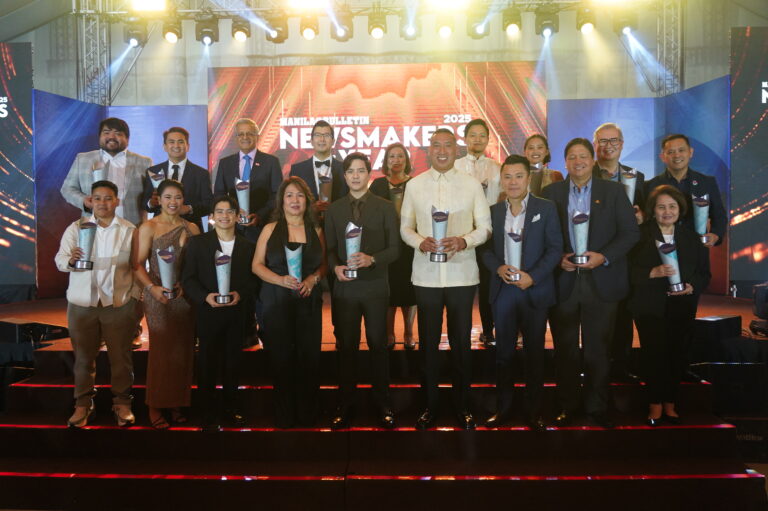How this annual technology trade show has improved life—not just for tech geeks, but for everyoneThe mythical market for tech geeks, the Consumer Electronics Show (CES) 2025—has just concluded. Starting way back in 1967, CES has been the launchpad where companies try to let their boldest offerings fly. And while so many notable products have …
How this annual technology trade show has improved life—not just for tech geeks, but for everyone
The mythical market for tech geeks, the Consumer Electronics Show (CES) 2025—has just concluded. Starting way back in 1967, CES has been the launchpad where companies try to let their boldest offerings fly. And while so many notable products have made their mark on CES, there are a few that really made waves not just by the impact in their industry, but in actual improvements they provided for people.
Here’s a quick rundown of CES’s biggest successes that made life easier and better:
Philips N1500 VCR (1970)
When we think of CES now, sleek smartphones and spectral virtual/augmented realities come to mind. But half a century ago, things were a lot more solid and tactile. Back in 1970, Philips introduced the first video cassette recorder targeted for the mass market: the N1500 VCR. The device only had one selling point—it could record your favorite programs so you could watch them later.
It wasn’t cheap, and it was big and bulky, but it did give us a peek at a tantalizing prospect—a future where content wasn’t dictated by TV schedules—a feature that would later become a major selling point for streaming services such as Netflix, Prime Video, and Disney+. If you have ever enjoyed a K-Drama or a movie from those services, think of this boxy boss that paved the way.
Atari Home Pong (1975)
Even the simplest things can make the biggest waves. At CES 1975, Atari gave us the Home Pong console, and nothing was ever the same. The game was so simple it’s almost weird by today’s standards: two paddles, one ball, and hours of endless fun.
Nobody knew it then, but Pong ultimately became the cultural phenomenon that would kickstart the video game industry. While it wasn’t the first, Pong’s success made home gaming consoles a viable business. Without Pong, there’d be no Wiis, no PlayStation, no Xbox. I don’t know about you, but my childhood (along with countless others) would have been a lot less fun without battling pixelated monsters.
CD (1981)
The lovechild of Philips and Sony, the compact disc (CD) was the great next step in audio format evolution. I could still remember the first time I’ve heard a CD album (Simon and Garfunkel’s Greatest Hits). it was playing in the living room of my tito while he assembled my first PC. It was a visceral experience: I could feel the music all the way to my bones.
Apparently, multitudes shared the feeling. As early as 1991, the CD has outsold all other audio formats in the US. The technology also birthed variants that pushed the boundaries of their respective industries: a whole set of encyclopedias on a single disc and impossibly large game installation files on disc sets. For a moment, we even had our own libraries with cheap CD-R technology. There’s always a demand for larger storage for data, and for a time, the CD was the undisputed king of the storage hill.
Nintendo Entertainment System (1985)
Who would have thought that a Japanese card company and a pixelated Italian plumber would be the saviors of the gaming industry? After the video game crash of 1983, many thought it was game over. Before the Nintendo Entertainment System (NES) gained massive popularity, the industry experienced a 97 percent recession, causing numerous game companies to fall into oblivion.
But the NES wasn’t just a console, it was a Phoenix Down, the Revivify spell, and the resurrection key. Even more impressive, the NES didn’t just save gaming, it turned it into a cultural juggernaut. If you grew up stomping on Goombas, debating over your favorite weapons on Contra, or unintentionally hearing Twinbee’s earworm background music in your head, you’ve got this CES debut to thank.
DVD (1996)
CES 1996 showed the world the DVD, a sleek disc that promised sharper video, better audio, and extra features like director commentaries and deleted scenes. Compared to bulky VHS tapes, DVDs felt like a miracle. Movie nights got an upgrade, and by the early 2000s, DVDs had completely replaced VHS as the dominant home video format. Before there was Netflix binging, friends and families spent their nights with DVD movie marathons.
The extra features in DVDs also encouraged collection, a much smaller phenomenon that persists to this day. After all, who doesn’t have a friend of a friend who still runs a LOTR-extended DVD marathon every Christmas? And we still have those Wong Kar-wai die-hard fans or anime enthusiasts who scour hole-in-the-wall retailers when they’re outside the country. Even though streaming dominates movie distribution now, there are still DVD devotees out there with their rare collections.
HTC Thunderbolt (2011)
HTC’s Thunderbolt, the first smartphone to harness the power of Verizon’s 4G LTE, seemed like a marvel. Sure, fast internet is common now, but back then it seemed like a miracle. Consider: the max download rate of 3G is around 21Mbps; 4G can go up to 1Gbps. Suddenly, streaming videos, downloading apps, and browsing the web on your phone didn’t make you want to bang your head on the wall.
And while competitors quickly outshone the Thunderbolt as it suffered fundamental issues like overheating and poor battery, it would be unfair not to acknowledge how it paved the way for the smartphones and apps we rely on today. After all, can you imagine waiting for Tiktok videos or Instagram reels to load at a snail’s pace without fast internet on your phones?
Oculus Rift (2013)
What’s always coming but never arrives? Tomorrow… and Virtual Reality (VR). VR has been “the next big thing” for decades, but it wasn’t until CES 2013 that the hype felt it could all be real. When Oculus showcased its Rift, people—and other manufacturers—took notice. Gamers imagined immersive worlds. Filmmakers saw new ways of telling stories. While VR is still more of a dream than a reality even today, Oculus’s CES debut put VR back on the map and inspired competitors like PlayStation VR and HTC Vive. Looking forward, who knows how VR could ultimately enhance our lives—not just in entertainment, but in medicine, communication, and other industries. It’s too early to tell, and the possibilities are endless.
Technology that stands the test of time are those that really make life easier and better for people—just like The Manila Bulletin! For an incredible 125 years, The Manila Bulletin has not only provided relevant information to the nation, but has also championed the cause of the Filipino by providing stories that uplift, inspire, and encourage us to do better.
“There is Good News Here” at The Manila Bulletin, because we believe that there is never ending hope for the Filipino.
(Photo from @ces/Instagram)






